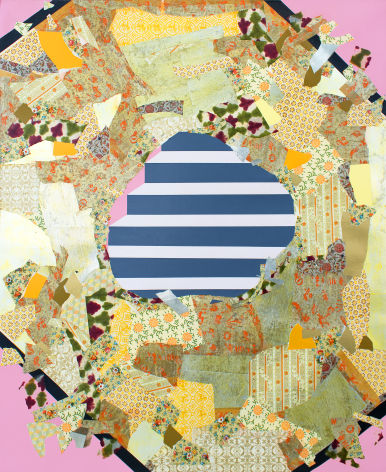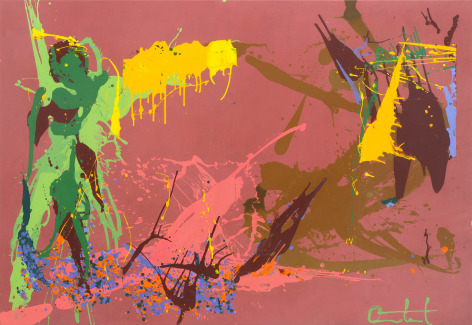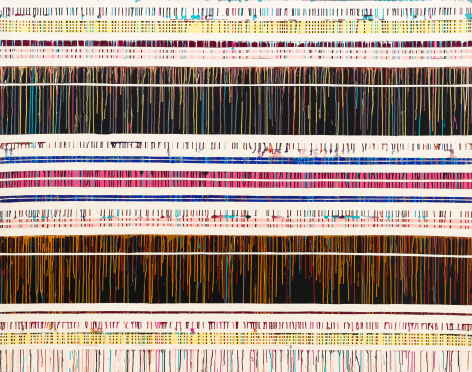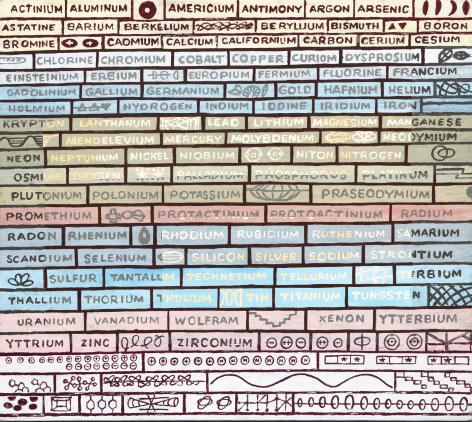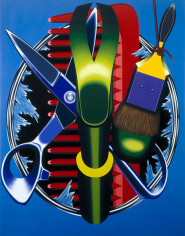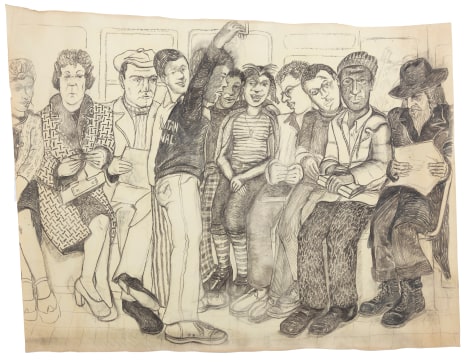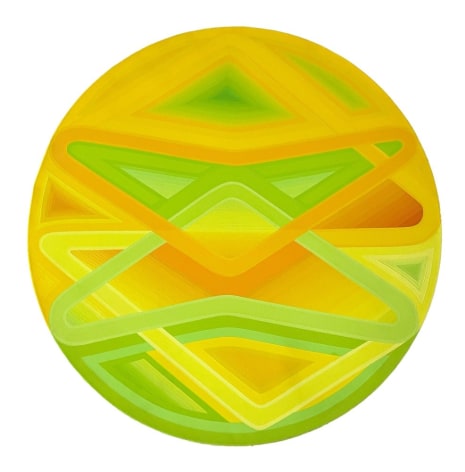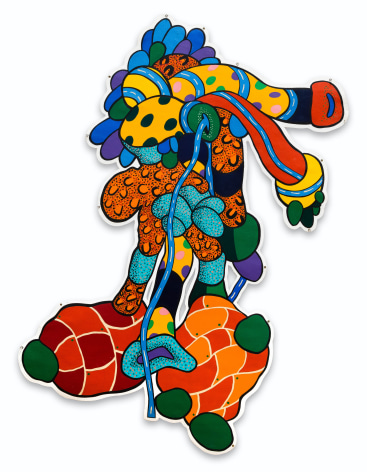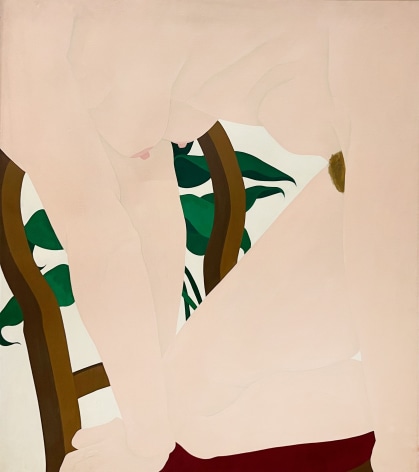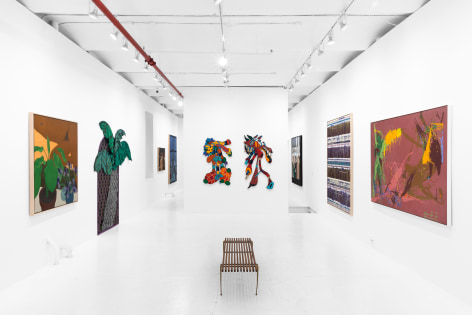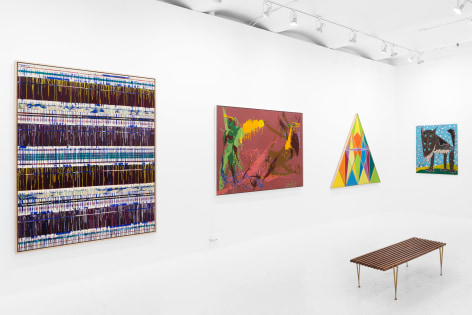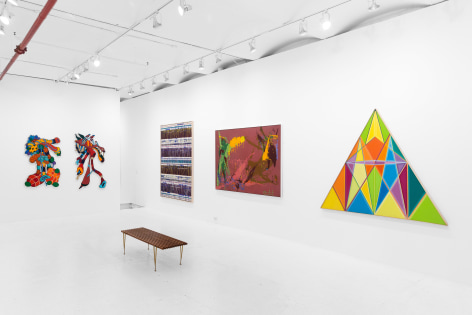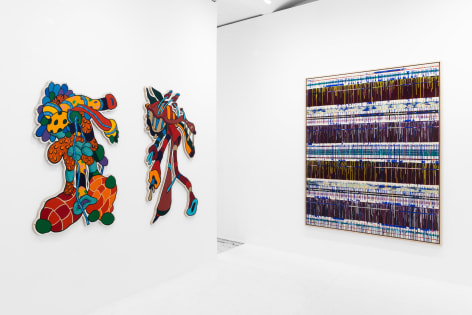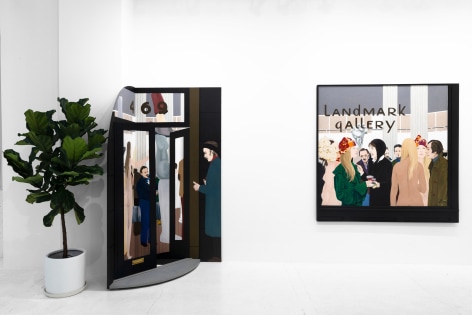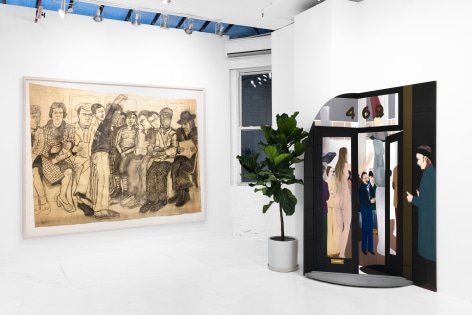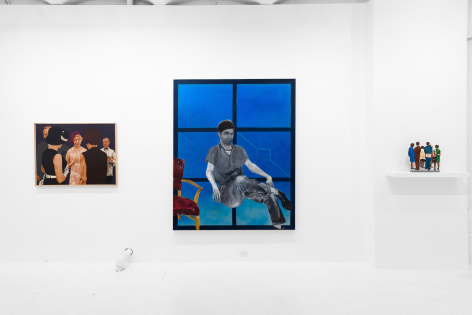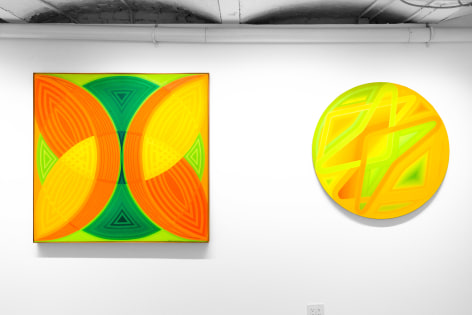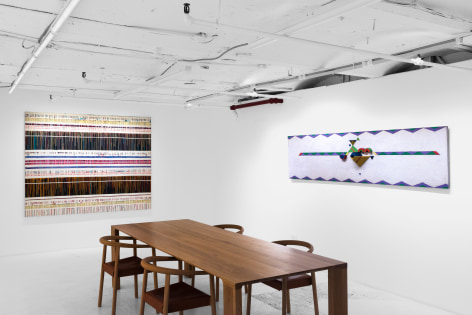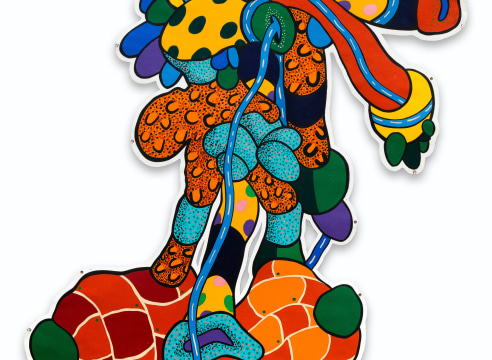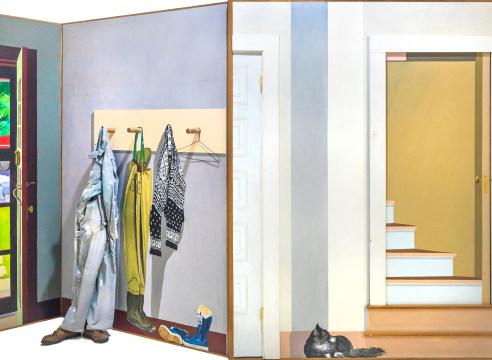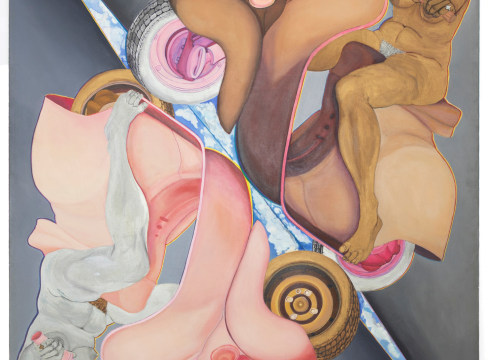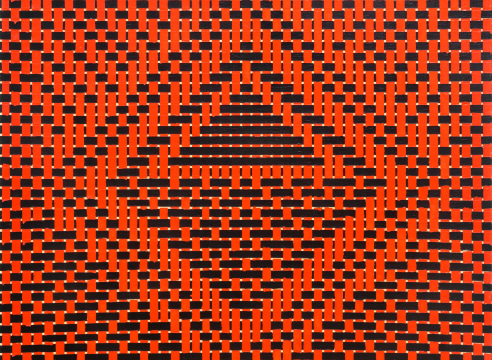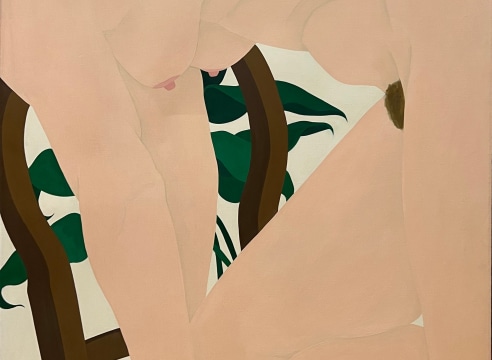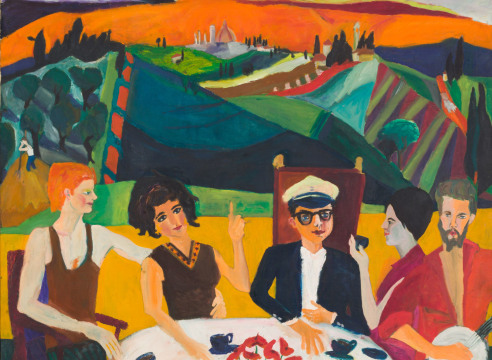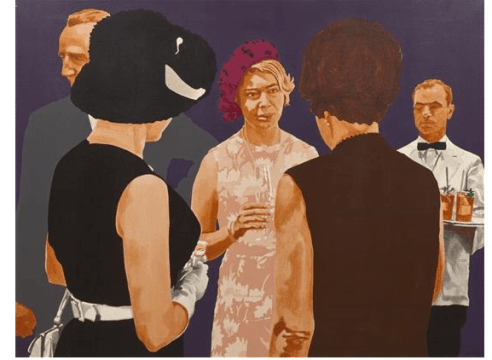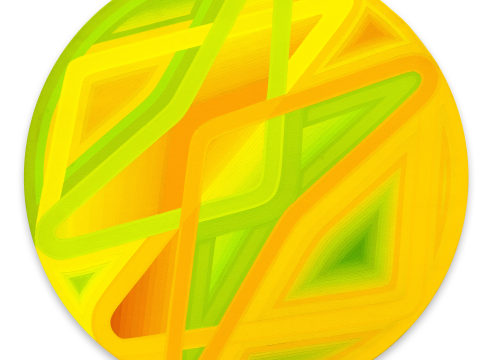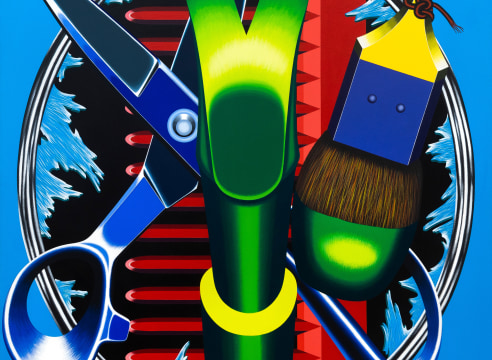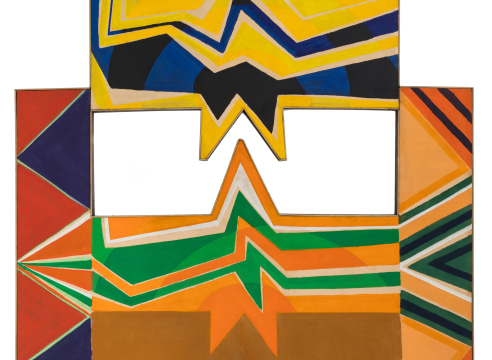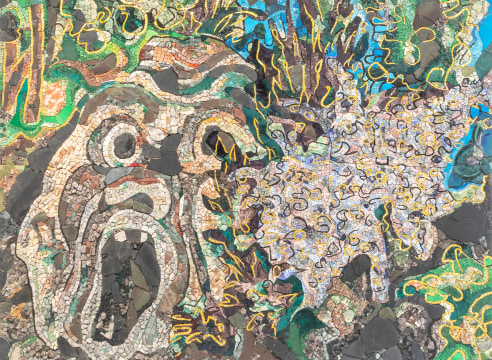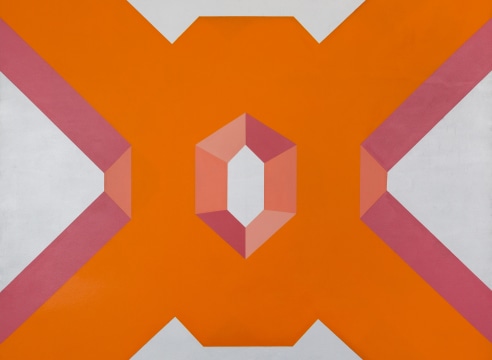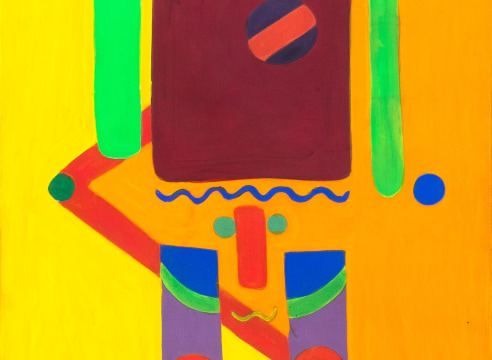
Eric Firestone Gallery Opening Reception: Friday, March 22, 6–8PM
Ellsworth Ausby • Vincent Baldassano • Charles DuBack • Martha Edelheit • Susan Fortgang • Regina Granne • Mimi Gross • Evelyn López de Guzmán • Howard Kanovitz • George Mingo • Naoto Nakagawa • Joe Overstreet • Judith Blum Reddy • Miriam Schapiro • Ned Smyth
Loft Generation surveys painting in New York during the “pluralist” period of the 1960s–80s. Focusing on artists who worked in Manhattan’s expansive lofts, this show introduces the work of seven artists: Vincent Baldassano, Judith Blum Reddy, Susan Fortgang, Regina Granne, Evelyn López de Guzmán, George Mingo, and Naoto Nakagawa, who are showing with the gallery for the first time in New York, alongside several gallery artists.
The artists were largely working in downtown Manhattan, in lofts that were raw but offered open, generous spaces and proximity to art materials and industrial materials that could be repurposed as experimental supplies. The artists in the exhibition come from diverse backgrounds, reflecting the art world’s increased openness to varied perspectives and the rise of alternative spaces in the 1960s and ‘70s.
Judith Blum Reddy (b. 1943) is an artist whose work emerges from her research of maps and lists: social critiques of our classification systems. In the early 1970s, Blum Reddy moved to Paris, where she collaborated with other women artists in documenting racism, sexism, and inequality among social classes. She spent two decades working at the Camille Billops and James V. Hatch Archive of African-American Culture of Manhattan, transcribing interviews and creating lists of missing information in the documentation of visual African-American culture. Her grid-like structures shift from neutrality to personal and political statements.
This theme of the interrupted grid comes through in other artists in the exhibition, like the work of Susan Fortgang (b. 1944). Fortgang’s 1970s paintings feature horizontal bands of color with insistent vertical drips. They declare the artist’s rhythm and process. These were such an exuberant departure from the grid associated with the Western painting tradition that John Perrault included one of these works in his landmark Pattern Painting show at P.S.1 in 1977. This exhibition brought broader attention to Pattern and Decoration to a wider audience, a movement both Miriam Schapiro (1923–2015) and Ned Smyth (b. 1948) are intimately associated with.
Vincent Baldassano (b. 1947) is an artist defined by his experimentation with imaginatively shaped and elaborately cut canvases. The forms and high-keyed colors derive from still life elements—fruits, vegetables, and flowers—but become warped and suggestive of bodies. Baldassano conjures a lush garden of surrealist organisms. Baldassano was a founding member of the Manhattan Breakfast Club during the early 1970s and ‘80s in Soho, where he lived at the time. His shaped canvases have a lively play between stylized geometry and the organic.
A similar play informs the striking paintings of Naoto Nakagawa (b. 1944). In them, highly keyed depictions of nature are juxtaposed with consumer items like drills, hair combs, pencils, and bicycles. Not entirely a Pop artist nor a Photorealist, Nakagawa was interested in “man-made versus nature-made,” a human relationship with nature at times harmonious or violent. Between 1975 and 1979 the artist lived in Rural Vermont which sparked his interest in the raw elements of the natural world reminiscent of his childhood outside Osaka.
Evelyn López de Guzmán (b. 1947) similarly draws on shapes and objects observed in the natural world or in the city, rendered as sharp geometric configurations of interlocking forms that vibrate with a glowing kineticism. Born in New York to Puerto Rican parents, López de Guzmán studied pre-Columbian textiles, the influence of which is visible in her work.
The balance of structure and intuition is also found in the work of Joe Overstreet (1933–2019) and Ellsworth Ausby (1942–2011). Both artists used geometry and mathematics but also referenced jazz and chance procedures to reflect their experimental painting processes and societal issues. All three of these artists were involved with alternative exhibition spaces that showcased artists of color, with López de Guzmán and Ausby both showing at Cayman Gallery, a space celebrating Latin American and Caribbean artists, and Overstreet co-founding Kenkeleba House, a space that championed Black artists. The work of Judith Blum Reddy and figurative expressionist George Mingo (1950-1996) were included in the legendary Black and White Show, curated by Lorraine O’Grady for Kenkeleba House in 1983.
The figurative paintings in the exhibition explore themes of interiority and exteriority. Charles DuBack (1926–2015) uses a reductive painterly means to articulate figures, but then adds sculptural “real” elements to create environments both indoor and outdoor. Mimi Gross (b. 1940) is represented by a monumental drawing for the 3-D installation Ruckus Manhattan; both the drawing and installation explore the density of public life in Manhattan—in this case a subway car. Martha Edelheit’s (b. 1931) paintings of nude women and men often show figures seated or reclining but lacking visual articulation of the furniture their bodies would be resting on. Her work asks how much specificity the viewer needs to situate themselves.
Regina Granne’s 1970s paintings of female nudes utilize extreme cropping, spatial compression, and an angled point of view to engage and even disorient the viewer, defamiliarizing our understanding of the subject. Granne (1939–2013) has described her work as "a game of the mind” but also one that “is intensely observed and matter-of-fact.” Both Granne’s and Edelheit’s painting can be situated within a larger context of women artists reclaiming the female gaze. The groundswell of feminist art gave rise to women-centered exhibition spaces in New York such as A.I.R., of which Granne was a member, and SOHO20, where Edelheit was a member.
This show follows the exhibition Godzilla: Echoes from the 1990s Asian American Arts Network, which was on view from January–March 2024. With Loft Generation, Eric Firestone Gallery continues to explore the essential work that happened at alternative spaces and identity-based artist-run collectives.
Loft Generation: Painting in New York, 1960s–80s
Eric Firestone Gallery
40 Great Jones Street | New York, NY
March 22 – April 27, 2024
Tuesday – Saturday, 10 AM – 6PM
For further information, contact: press@ericfirestonegallery.com

